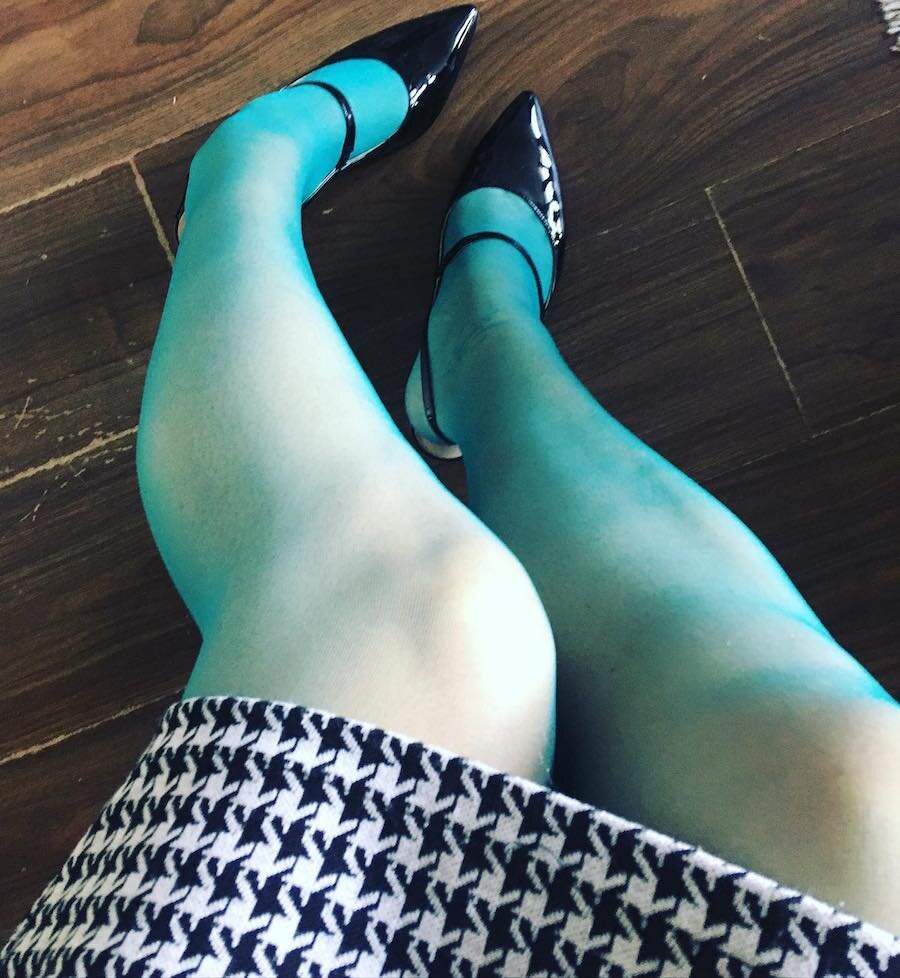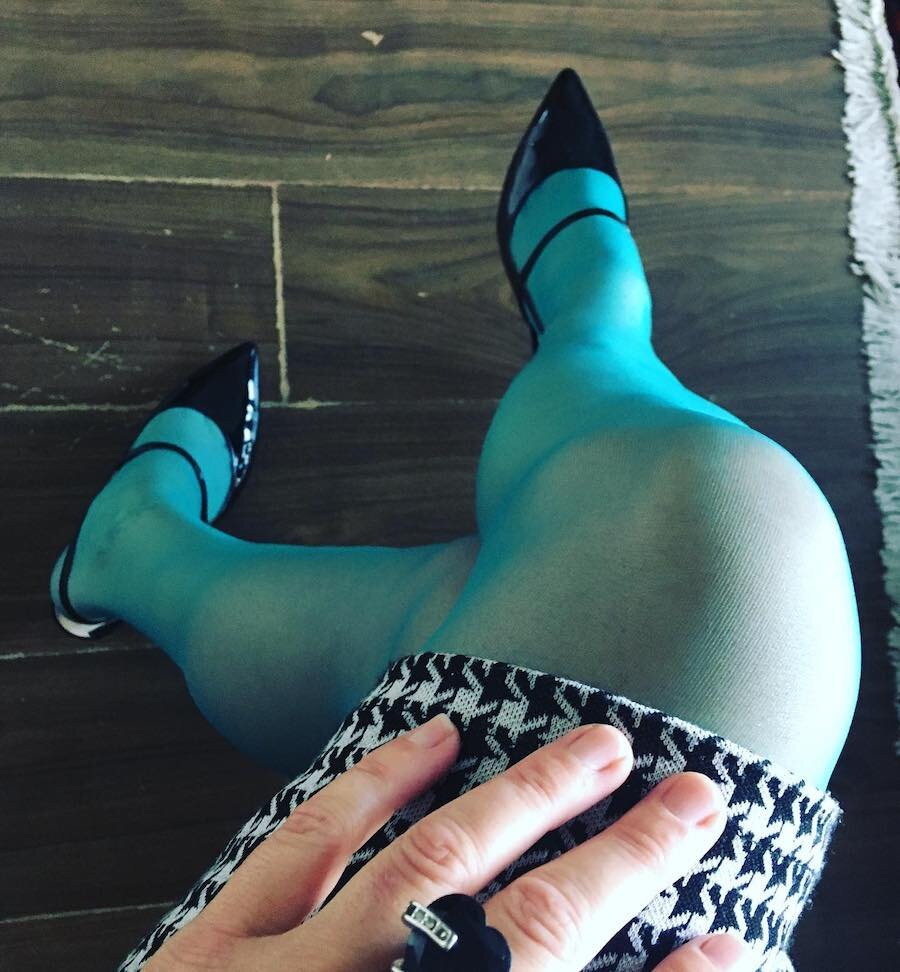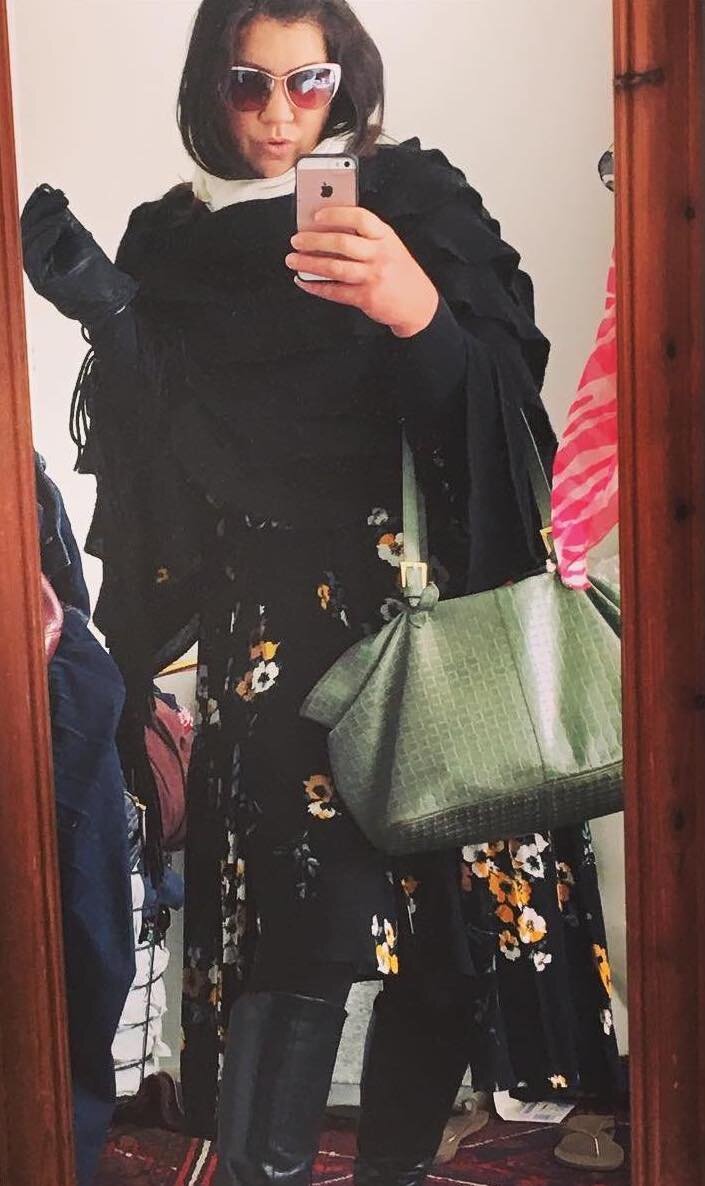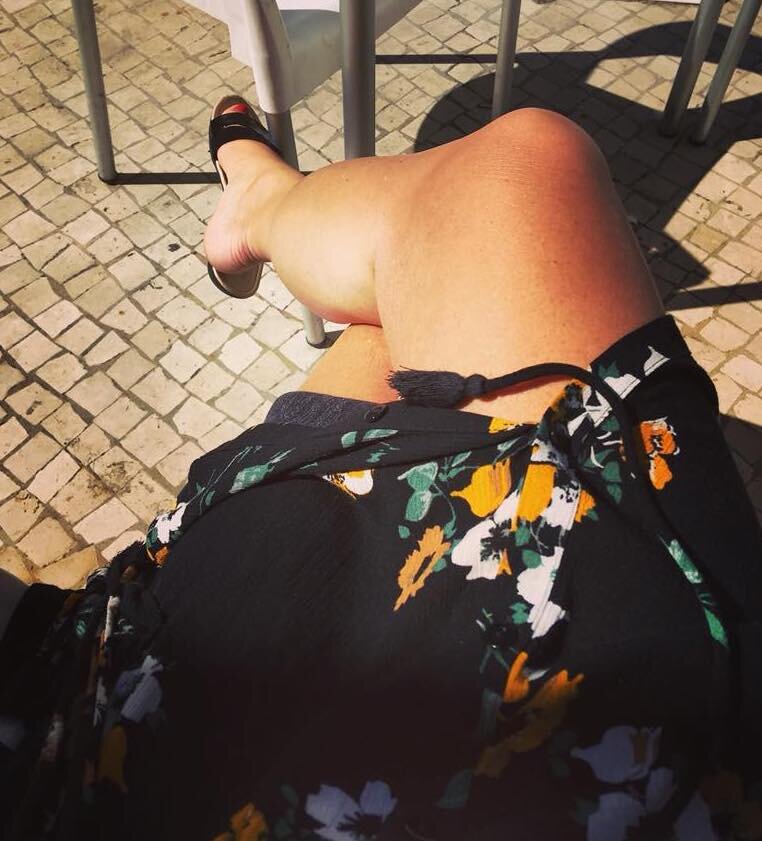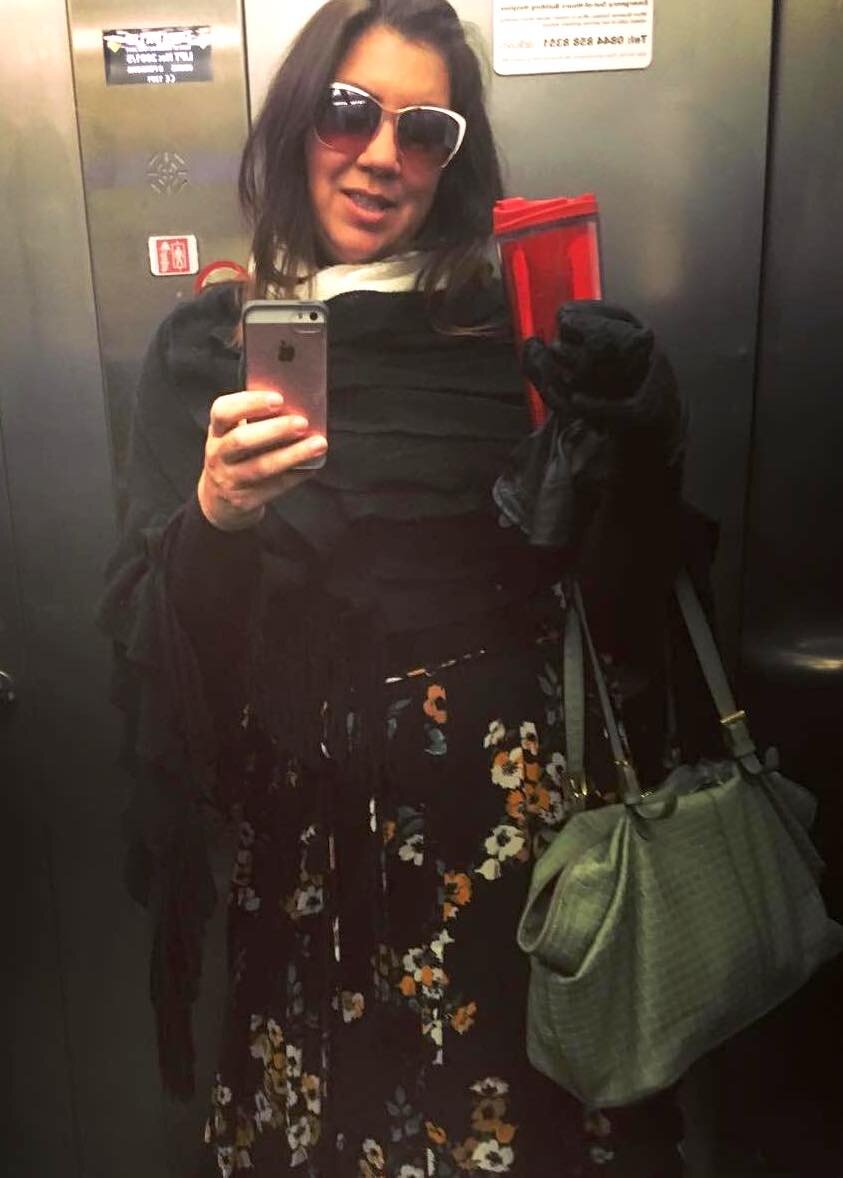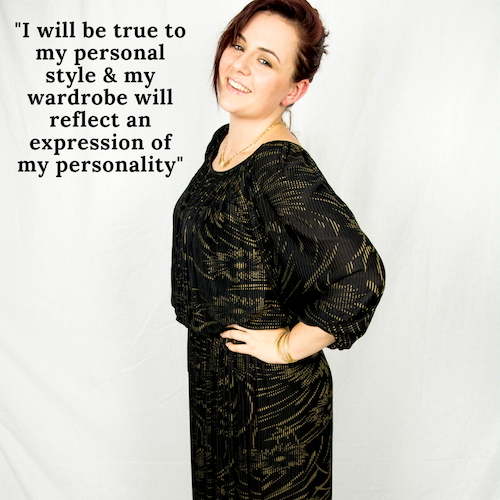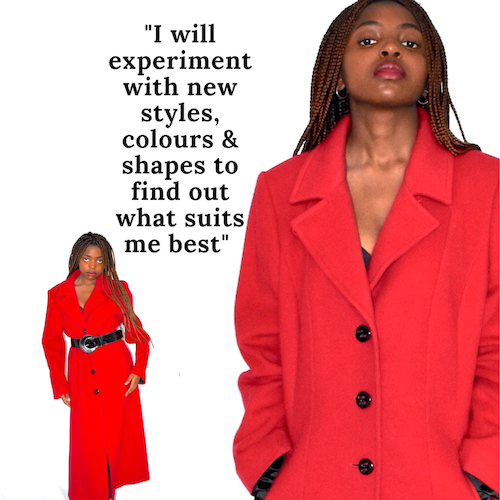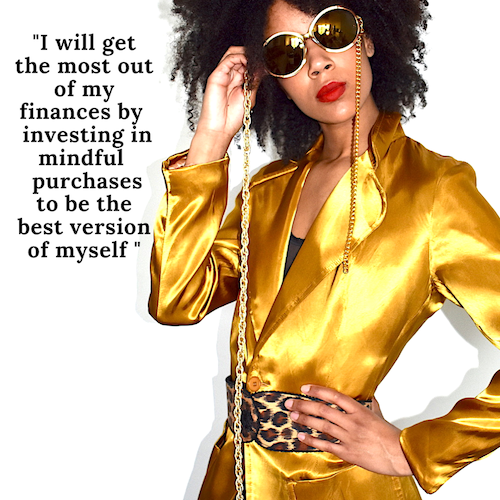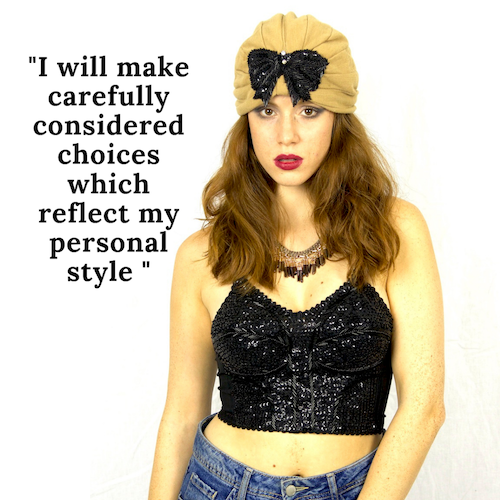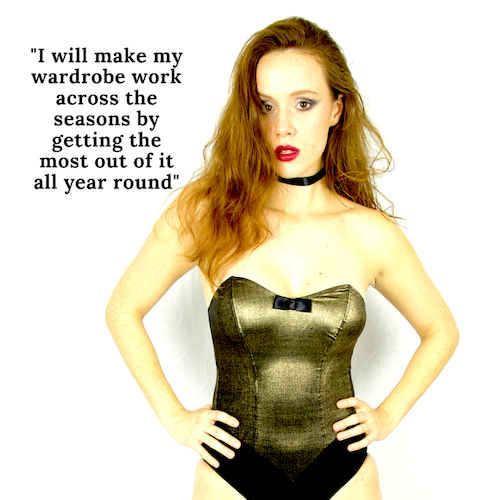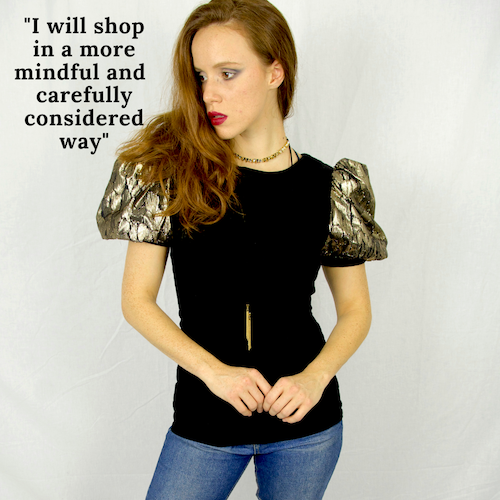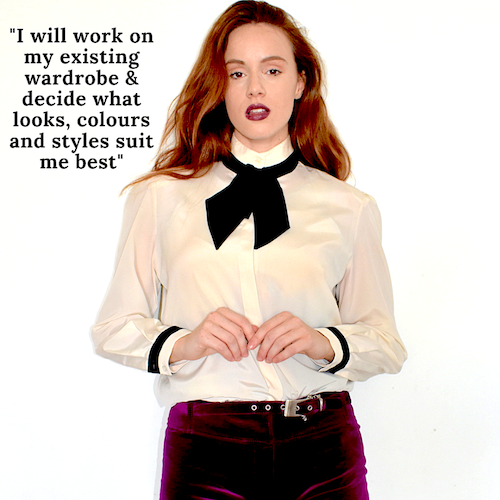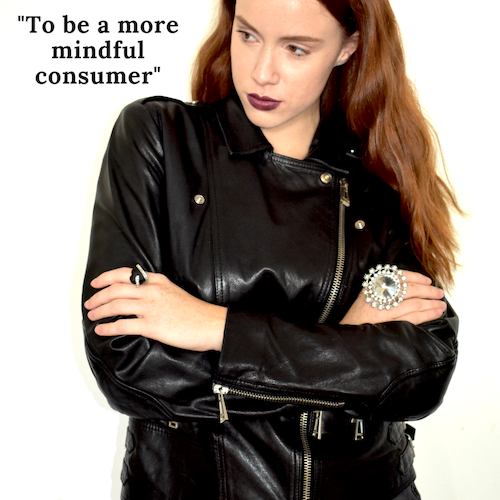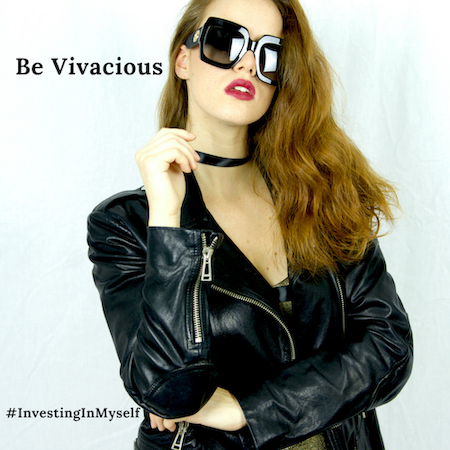Thrift Futures - Fashion Futures, What Next?
This blog may be especially helpful for those of you who have been furloughed, or generally struggling to meet the bills, with your main focus on prioritising the essentials. It may also help you to rethink about fashion and its future.
The 5 steps below will help to make what you already own feel fresh and new and get those creative juices flowing at the same time, which in turn should help you to feel gorgeous and confident in your personal style. It’s amazing what you can find that you already own to really glam up for the festive season.
A scarf or a piece of jewellery or even a pair of coloured or sparkly tights that have been hiding in the back of your drawer could be the key to turning on the glam factor and creating yourself a new look from hardly anything. If you’re a fan of Strictly Come Dancing, why not get dressed up on a Saturday-night-in with a glass of something and your favourite nibbles. Dance like no one’s watching (because maybe they actually aren’t).
What we wear is a reflection of the times we live in and the lives we lead. It’s more important now than ever to find some uplift in what we put onto our bodies, without spending any extra cash if that’s where you’re at.
If you can afford to buy yourself a little treat, then why not make it something pre-loved or vintage. That feel good factor you get from shopping more sustainably is a lasting one, if you chose right.
Shop from a selection of unique pieces in my themed collections to complement any existing outfit that needs a little sprucing up, perhaps with an accessory or some colour, or maybe some festive metallics.
5 Ways you Can Live a More Fulfilling Life With Clothes & Avoid Dumping on The Environment:
1. MAKE FRIENDS WITH YOUR WARDROBE
Overhaul your wardrobe and work out which styles and colours suit you best. Have a colour consultation or take a look at books such as ‘Know Your Style’ by Alyson Walsh to get ahead. Think about your lifestyle and pieces which you practically live in that already work for you. How could you improve on this? It might mean simply adding a new colour or accessory into your outfits that already work, or perhaps you could invest in that statement piece which would mean one outfit could turn into several which in turn means more joy per wear and over time, more money in your pocket. Try my 5 step detox here.
2. INVEST
Invest in Yourself: When you’re out, make more considered purchases and invest in pieces which can be utilised in a number of ways to make them really work for you well, by complementing those you already own.
My investment purchase a few years ago was a leather jacket and I cannot believe how this has changed so many outfits, making them feel fresh and new. My next investment purchase is going to be a leather skirt. I already tried around 5 on in the sales last year and have researched online this year too, but have yet to find the perfect one. If I’m spending more than £50-100, it has to be spot on and where possible, a pre-loved or sale purchase as my leather jacket was.
Sometimes we have to make small compromises on the style and details we want, as long as the fit, price and overall look is right for us. Shopping with longevity in mind and knowing what will work well with an investment addition is so rewarding if you take some time beforehand.
3. JOY PER WEAR
Think about transitional periods where certain pieces cross-over. I always like to see 3 ways of wearing something like a dress, so it can be worn all year round. With tights and a polo neck in winter and with bare legs and arms in the summer, changing footwear to really give it more joy per wear and updating it as you go. This dress (above) is a favourite since I found it in the sales 2 years ago and I wear it all year round… Summer, Winter and the In-between.
4. RENT. RECYCLE. REPAIR
To really champion circular fashion, use the 4 ‘R’s: Rent. Resale. Recycle. Repair. Using these four R’s will also help with your wardrobe detox by allowing you to divide pieces into these potential categories. It will also make you feel better about letting things go, knowing they will live on in some way, and bring joy to someone (or something) else.
5. SHARE YOUR WEARS
Sharing is caring as they say so why not have a clothes swapping party with your friends or set up a local community event where everybody pays a fixed price to attend which covers the room hire. If it’s really popular you could donate any profits to charity along with any leftover pieces of clothing. I used to attend clothes Swishes in Brighton many years ago, where I took several decent pieces along and received tokens of differing values depending on what I brought and then was able to spend them on equivalent quality pieces. I still own at least two of these items and the others have continued their journey in the circular fashion lifecycle. You could also involve local small businesses such as hair and beauty to offer mini treatments which also gives them a platform to sell their products and services too, helping local businesses to thrive. Oxfam’s Tag Your Bag is another way to add value to your charitable clothing donations.
Our shopping habits
We have unfortunately been fed through marketing and advertising over the last decade, to become a more throwaway society in a convenience culture. I’m always thinking of new ways to inspire the next generation of shoppers to rethink this. There are many young people shopping better than previous generations, and we can learn a lot from our war-time generations, and their successors too.
Unfortunately we are still very heavily influenced by popular culture to consume, many of us easily led by clever marketing and branding, and also with celebrity endorsements through reality TV shows. We have to keep working on championing the slow fashion approach, to encourage and reward new ways of shopping and repurposing. This is something I’d love to realise and implement for ThriftVIP whereby one of my services offers a reward system to earn credits for unwanted items. There are so many exciting new business model opportunities within fashion, to benefit people and planet, and there are so many of us small enterprises working on this too, behind the scenes.
To appeal to my fashion-inspired Thrift Lovers, I follow the seasonal trends by curating collections based around the current ones. I take inspiration from them, to show how easy it is to do this with pre-loved and vintage. Ok, it might not be H&M’s latest collaboration with a popular designer, but it will often be unique and sit alongside these trends. You may have seen my recent comparison with The Vampire’s wife, and my alternative to the coined ‘Dress of the Decade’ by Vogue in October
Our love of the new though is a human obsession. It definitely needs taming. It becomes addictive and fills a temporary hole for many who buy fast fashion frequently. This is why rental will probably become quite popular and is a good model to supplement and support this desire.
It can also take a while for young people to find their own style, and fast fashion is a way to experiment with this, as much as young people will do the same with slow fashion; purchasing from charity shops and vintages outlets, proving it is possible to avoid fast fashion too when experimenting with your style.
Rental could be the answer to part of this problem with over-consumption. Valuing what we buy and a shift in attitudes all take time, although if we are going to make a collective impact, time is not something we have, unfortunately.
fashion’s future
In this article by Jessica Toale, two possible fashion futures are coined: the ‘Steve Jobs’ or the ‘Hunger Games’
Imagining futures which are either minimalistic, purely based on quality over quantity, or on the other hand more innovative and hyper-individualised. The latter, in my opinion is a more attractive and realistic reflection of the need for human creativity, and the ability to thrive in creating the ‘new.’ Quality over quantity is something that needs to become second nature too, whilst also reflecting on the quality that the material used has the ability to be repurposed well by being less toxic to the environment, or its ability to break down easily in the environment or to create something else.
I believe both futures can be combined to create fashion’s new future and are already in motion. The fashion wheel is having an MOT as it risks spinning out of control with the existing business model. The brake-neck speed needs to be slowed, and the wheel of circulatory needs to be lit up in new and exciting ways.
There are many new technologies for fashion and the digital age favours those who can afford it.
For small businesses trying to innovate using this expensive resource, it can be a barrier; however we are all complex beings and rely on the need to connect as humans too, so this is where small can focus its efforts around providing human interaction and better service-based models.
Personally, I’ve found that settling into your own style by experimenting early on, to find your own unique takes on dressing, means that you can create a capsule wardrobe of combinations that will cleverly feel fresh and new because of the creativity and flexibility you have with discovering what truly works for you; colours, styles, shapes and all. By adding different accessories and a bit of creativity, there are endless options. I understand though that some need more direction where fashion or style is concerned, and to me it’s more about personal style than fashion per se.
It’s about deciding for ourselves what suits us, rather than being dictated to by the industry. As we all know this is often fed to us from brands, and more often, via influencers who are paid extortionate sums to tell us what is ‘in’ or ‘out.’ This can really dampen our own self knowledge and esteem, where confidence could be built upon new foundations and ways of seeing fashion and style.
There are many people already posting more authentically, but in its current state, the overall majority of influencer culture often remains damaging because of the unrealistic fiscal expectation concerning lifestyle and the money to support that. It scuppers the whole way of thinking about sustainability and becomes meaningless to us after its short lifecycle of aspirational unrealities, bound together on instagram platforms by endless posts of perfect worlds that don’t exist; contrived for our viewing pleasure.
I’m all for aspirational fantasies, but I’m also equally all for the real stories, sharing knowledge and supporting those who are doing something to give back to people and planet. Let’s get real and be accountable, to who we really are. You will definitely find a lot more authenticity if you follow the slow fashion movement.
What we also need to think about is how we can sustain the designers of the future to keep producing. There is already enough fabric in circulation and enough being dumped in landfill to remake from the material already out there, and I’ve seen many designers already embrace this idea to show that it can work. Graduate designers such as Leonora Christodoulou (NTU 2019) made some amazing pieces repurposed from military wear. Fabrics can often be naturally dyed, re-tailored and re-styled to accommodate some kind of trend orientated formula to keep those needing direction, happy and to keep manufacturers and their garment workers in paid employment. The deconsttruction process is all part of the fun and challenges creatives even more to push their boundaries in design.
Of course, it’s got to be the right quality, quantity and type, so making from quality fabrics in the first place is key; unless fabrics can be layered up to create better durability (imagine layer upon layer of cheap high street fast fashion fabrics sliced like a Baumkuchen, paying homage at the same time to its namesake as a tree cake, resembling the very tree rings it could be helping to protect.
It often seems to be a question of scale which is where therein lies the problem in the first place. Businesses seem to rely only upon scaling up, rather than looking to scale outwards and to think more laterally.
There’s also the problem of larger high-end brands wanting to protect their product and that whole area of burning stock to save the brands name really has to stop. It shows that the whole status system surrounding designer wear is quite ridiculous. But, therein lies the human condition of achieving power and status through clothing. It’s been going on for centuries. It’s the only way I saw being able to make my business more viable and appealing to others, by having designer handbags and accessories to sit alongside other vintage and thrifted items, so it would perhaps appeal to those who were looking to spend a little more on hand-picked quality vintage, customised vintage, and pre-loved offerings; without bulk buying vintage & pre-loved stock.
It was the only way I could see making it a viable business model with the current attitudes towards fashion and the enduring appeal of designer items. Just take a look at the success of Vestiaire Collective as an example of its popularity.
What I’m attempting to do differently with ThriftVIP is to present it in a way that is as appealing as the new, by taking time and effort to educate and inform, to reimagine these pieces to fit within current trends, to be presented in a better way, not just as pages of ‘stuff’ driven by volume and profit.
Repurposing and customising was taking too much of my time and money which I couldn’t make back because I couldn’t compete with the high street and fast fashion companies, even when I was offering what I thought was something more unique. Hours of sewing and embellishing just didn’t pay off or make a viable business model. It highlights the disparity of how much profit is being made here by these big fast fashion brands in comparison to the wages they pay their garment workers.
An ex-military parka customised by ThriftVIP
This is also the tone set within a work culture that rewards status, ostensibly so for example if an item such as a handbag is rented on occasion, to make someone appear to be ‘gaining rank’. It’s a poignant reminder of our consumer culture and its proliferation through all aspects of our lives, especially in the corporate world.
The Louis Vuitton ‘Neverfull’ really gets around these days, and Supreme maintains status too, by collaborating with high-end designers and cult brands, having risen from the skate subculture to cult status and status symbol. Ironically, the red box logo is largely based on Barbara Kruger’s propaganda art where phrases in her work address cultural constructions of power, identity, consumerism, and sexuality. It seems when these types of brands achieve success, a lot of the original meaning and purpose can be lost on the consumer, even if the signature aesthetic is still there.
I am also not too naïve to know that there are fashion formulas that most brands will use towards achieving creditation and success. Having the capital to give away product to influencers is just one of those easy tricks that will gain status for a brand. This is why I feel the fashion industry is best represented as a wheel rather than a ladder, to climb. There is so much circulatory about it that can be used to help or hinder its success and its effects. A lot of it is careless and a lot of it does damage to a system when monetary value is the only outcome. Adding value through people and planet without greenwashing, and with integrity and transparency, is the way forward.
A Vintage LV Papillon
Combining two possible futures with innovation and re-invention of how the industry works, across all aspects of the supply chain is the way forward to a new future for fashion, albeit a complex journey not all are willing to embark upon or embrace. Raeburn are a good example of this, especially in terms of a more utilitarian practicality and style. They are leading the way in terms of creating the new whilst avoiding waste.
A combination of fundamental changes in mindsets, how we perceive and our expectations of fashion needs to change. And we can do change, we’ve proved that this year; but can those in power who hold a lot of those cards do it too, for the sake of us all.
DEAR WARDROBE... I LOVE YOU
As the new decade rolls on into 2021 and we continue into a new year, I hope this blog has helped you to rethink your fashion habits, even if it’s in some small way. Building a wardrobe of clothes you love and cherish is a really good feeling. If you look after your clothes, they’ll see you through many chapters of life and become like old friends. Learning to love your wardrobe takes time and tweaking, but with a little effort the rewards can be so amazing.
How about setting a few new resolutions relating to those existing habits and look at experimenting again with your style.
I’ve put together a few ideas here to get you started, all with varying price points.
All of these pieces are available now in the shop, just click on the image to take you to the listing:
Also, see the SUSTAINABILITY page for more about how you can help to shape fashion’s future for people and planet over profit, and see my dedicated SLOW FASHION REVOLUTION page too.
Look out for my article (link below) where I share with you some of my own favourite items of clothing, to show you that I do practice what I preach and that it can be immensely enjoyable treating your clothes like old friends, with memories attached, and positive vibes in passing these on to the next wearer.
See my clothes and their stories with pieces i’ve had for 10 years or more in the ‘Dear Wardrobe, I Love You’
And just to show how fashion has impacted me from an early age, take a look at this illustration I did when I was 8 years old, using a fashion stencil I was bought for my birthday. Something my auntie had held onto as I often do with drawings from little ones which are so insightful and special.
Would I have chosen lilac if it wasn’t making a comeback?
Food for thought.
Thank you for reading my blog, I hope you found some insightful takeaways.
Keep thrifting,
Madeleine x


